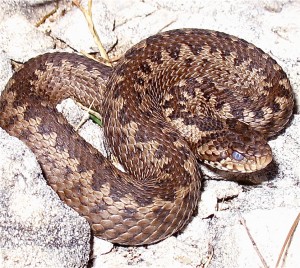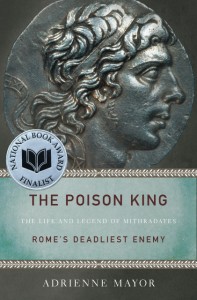By Adrienne Mayor (Wonders & Marvels contributor)
Despite the perils of handling deadly snakes, arrows steeped in snake venom were the most popular—and the most feared—biological weapons in the ancient world. The deep antiquity of the concept of envenomed projectiles is revealed in Greek mythology, when Heracles dipped his arrows in venom leaking from the dead Hydra Monster. Snake-venom arrows were reported in many historical battles in antiquity. In 326 BC, for example, Alexander the Great encountered lethal arrows in India—the symptoms of his dying soldiers identify the poison as Russell’s viper venom. By the fifth century BC, Scythian archers concocted such a nasty arrow poison that their much publicized recipe still has the power to horrify today. They mixed the venom of steppe vipers with blood and dung and left the ghastly glop to putrefy underground. They even painted their arrow shafts to mimic the markings of poisonous serpents.
Snake-handling shamans of the Agari and other Scythian tribes of the Black Sea and Caucasus went far beyond simply weaponizing venom. According to ancient Greek historians, they also possessed the secret of milking snake venom to make antidotes and medicines.
Mysterious Agari doctors were recruited by Mithradates of Pontus, whose Black Sea empire challenged Roman power in the first century BC. As the world’s first experimental toxicologist, Mithradates and his international team of investigators sought a universal antidote to neutralize all poisons, by ingesting a cocktail of tiny doses of toxins and antidotes. His regimen calls to mind the principles of immunization.
An astonishing medical milestone, carried out by Mithradates’ Scythian doctors, was reported by Appian, a Greek historian of the Mithradatic Wars. Their secret knowledge of venom’s beneficial powers saved Mithradates’ life on the battlefield and anticipated modern scientific discoveries by more than 2,000 years.
In 67 BC, Mithradates suffered a grievous sword slash to the thigh. Bleeding profusely, he hovered near death, but the Agari staunched his wound with serpent venom. Mithradates recovered and led his army to victory. This is the first documented account of using the coagulating effects of miniscule amounts of steppe viper venom to stop severe hemorrhage, an exciting discovery made only recently by scientists in the new field of “venomics.” The ancient Scythian healers would not be surprised to learn that crystallized venom of steppe vipers (Vipera ursinii) from their homeland is now a major export to emergency rooms around the world.
Adrienne Mayor is a Research Scholar in Classics and History of Science, Stanford University. She is the author of “Greek Fire, Poison Arrows & Scorpion Bombs: Biological and Chemical Warfare in the Ancient World” (2009) and “The Poison King: The Life and Legend of Mithradates, Rome’s Deadliest Enemy,” a nonfiction finalist for the 2009 National Book Award.

